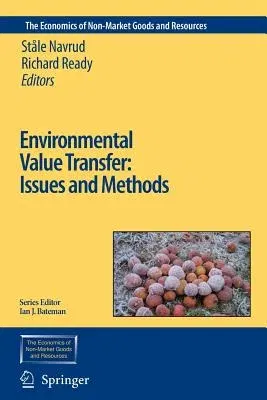The transfer of environmental values in time and space has increased
rapidly with the widespread use of cost benefit analysis in project
evaluation and regulatory assessments over the last three decades. Over
the last 15 years, other policy uses like environmental costing,
greening of systems of national accounts and natural resource damage
assessments after oil spills and other pollution accidents have also
contributed to the increased demand for environmental values. However,
most early transfers were conducted in an uncritical manner, often
lacking sound theoretical, statistical and empirical basis, and did not
question the validity and reliability of the transferred values. What
appears to be the first environmental value transfer exercise estimated
damages, and illustrates the point that what is generally termed benefit
transfer, should rather be termed value transfer in order to capture
both reductions and increments in environmental quality and natural
resources. This first attempt to transfer environmental values seems to
be the calculation of lost recreational value from the Hell's Canyon
hydroelectric project more than 30 years ago, as described by John V.
Krutilla and Anthony C. Fisher in their book (Chapters 5 and 6): The
Economics of Natural Environments Studies in the Valuation of Commodity
and Amenity Resources. (John Hopkins Press, Baltimore, 1975). The first
large-scale user of value transfer was the USDA Forest Service.


